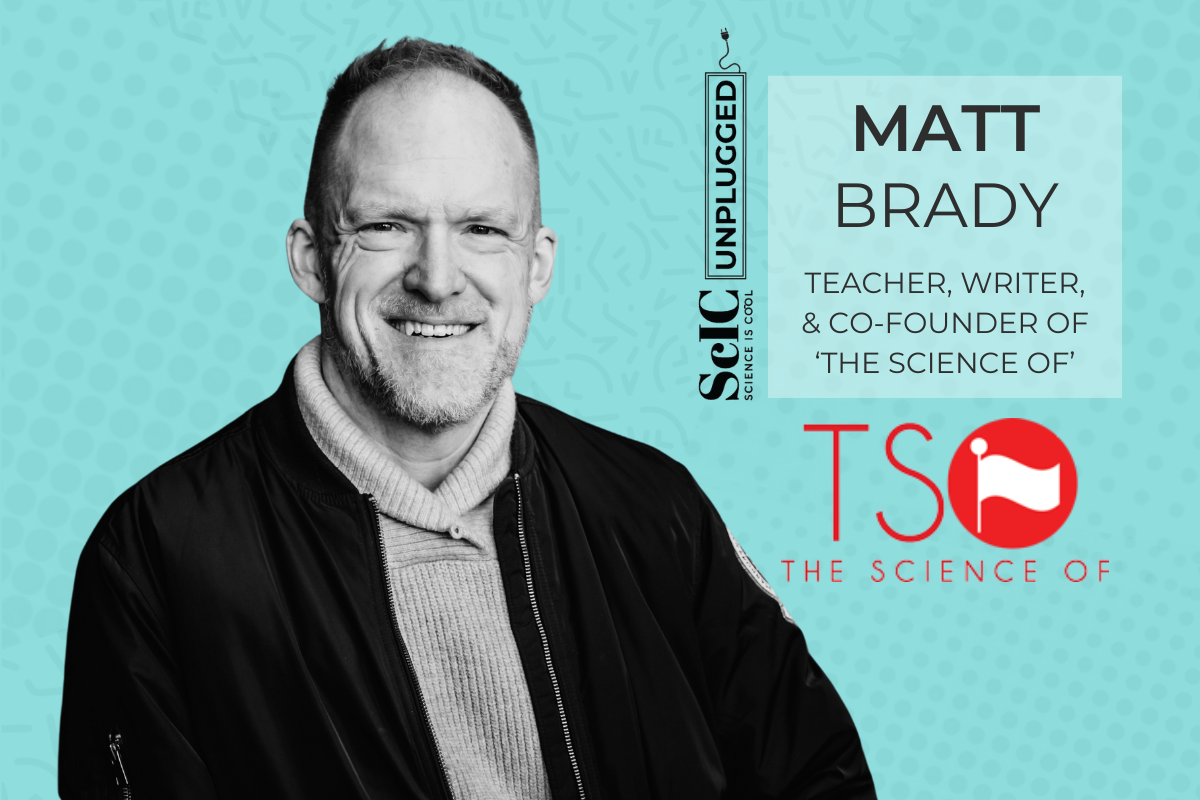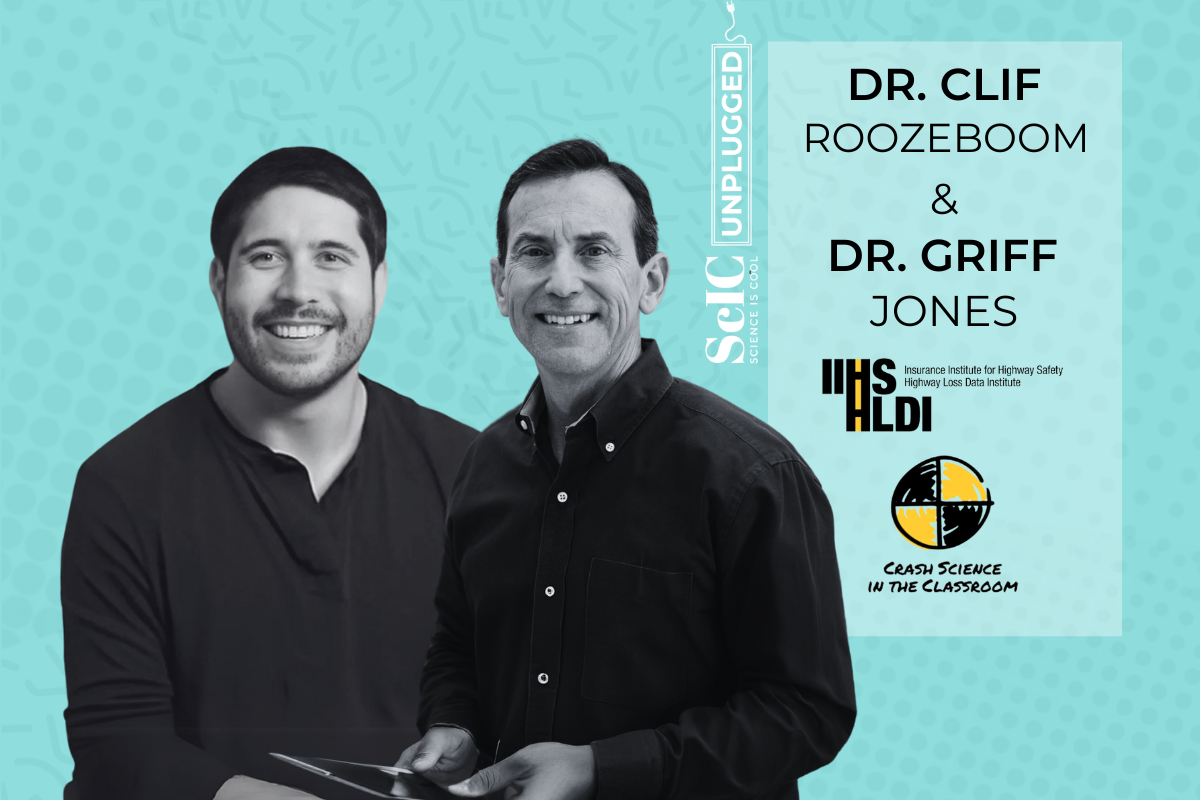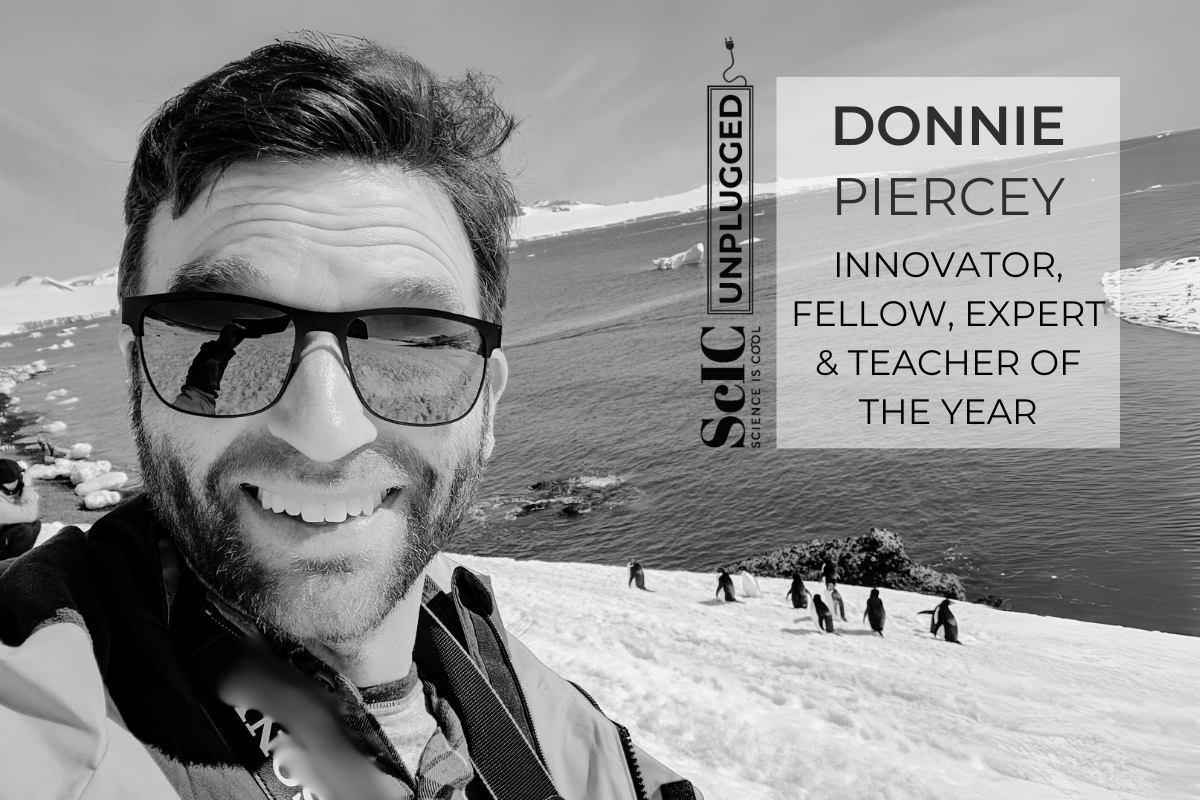3 min read
Connecting Content to Narrative: Tips for K-12 Teachers with Matt Brady
Science is Cool Unplugged podcast June 25, 2024

ABOUT MATT
Matt is a Physics and Chemistry teacher in Winston-Salem, North Carolina. He came in through lateral entry after spending 10 years writing about comic books and pop culture for various outlets. From the start of his teaching career, he realized that the fastest way to establish a connection with his students was through pop culture—the native language of which is “cool.” In the years since, he’s taught Honors Physics, Honors Chemistry, IB Physics, and Physical Science — all marinated in storytelling and pop culture. Somewhere in all of this, he wrote The Science of Rick and Morty, he and his wife were the science consultants on DC Comics’ Flash Facts, articles for various websites including Scientific American, and currently is the science contributor for Jack and Jill Magazine.
Lately, realizing that he’s been doing this all along, his focus has shifted to using storytelling as a STEM Education classroom method. His classes are rich in story and engagement, with continuing characters and scenarios, and they expose students to the captivating stories behind the names and discoveries in science that feed the curriculum. The goal is to make his students better storytellers who can tell the story of science and communicate science to a science-starved world.
More stuff about Matt:
- B.S. in biology, M.S. in Marine Biology, ABD PhD in Anatomy and Physiology
- Started writing about comics and pop culture (lifelong fan of both) while working on my PhD, ultimately leaving school to pursue writing (freelance writing paid better, and was more fun than brain surgery on rats)
- Wrote videogame guides, wrote for Wizard: The Guide to Comics, Toy Fare, and various other comics & sci-fi magazines. Founded (with a partner) Newsarama.com in 1999 — became the biggest comic book news website on the internet (did comic cons, interviewed comics creators, won awards…)
- Sold Newsarama.com and moved into teaching science in high school laterally. I had the science background needed to get set with my education courses.
- While teaching, have delivered professional development sessions in instructional techniques, learning strategies, and Teaching in a Post-Pandemic World.
- Co-founded TheScienceOf.org (with my wife), an organization dedicated to STEM outreach and communication. I have taken science to various events such as comic cons and community gatherings. Additionally, I have experience teaching Science Communication at Wake Forest University (vlogger Kyle Hill guested to talk about scicomm on YouTube), have helped organize Pint of Science, and regularly volunteer at our local science museum.
- Written comics - a Batman story, Buck Rogers Annual, John Carter of Mars, and miniseries, The Big Con Job.
- Have talked about using pop culture in the STEM classroom at (my old haunts) comic cons, as well as at NSTA and other science-teaching organization meetings
- Regular presented at NSTA national conferences
- After using The Martian in my chemistry classes, I have developed a relationship with the astrobotany lab at WSSU and collaborated on original research (fingers crossed, our bok choi grown in lunar regolith has produced good data…). I also have the research team come in to talk to classes every year.
- Chemistry classes read The Martian (with curriculum leaning towards Mars chemistry and challenges…), Physics read Project Hail Mary
- Earned my Certificat in Science Writing from Johns Hopkins - published articles about asteroids in the Hopkins magazine and Scientific American
- Along with my wife, asked to host/interview Neil deGrasse Tyson when he came through Winston-Salem on his book tour for Starry Messenger (total high point!)
- Characters in classes show up for weeks at a run to enhance storytelling in class: Gumm E. Bear, Kool-Aid Man, Frosty the Snowman, Gwen Stacy, James Bond
- Storytelling is demonstrated with students using/making Explainers - which combine visual and text components
- Couple of book projects in the works - if I can find the time…






